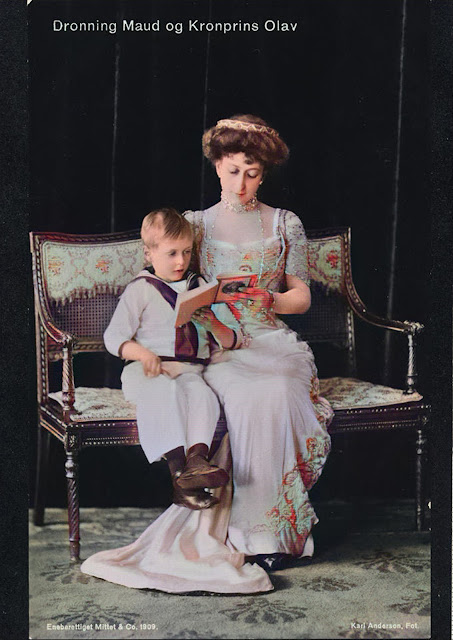Queen Maud of Norway was the first queen of an independent Norway for over half a millennium. Known for her chic fashion sense, she was a beloved royal in Great Britain, Denmark, and Norway.
Maud Charlotte Mary Victoria was born on November 26, 1869 at Marlborough House, the London residence of the then-Prince and Princess of Wales, who would later reign as King Edward VII and Queen Alexandra. She was the third daughter and fifth child.
Princess Maud was tomboyish as a girl, earning her the nickname "Harry", after her father's friend, Admiral Henry Keppel, who displayed utter sense of courage during the Crimean War was lauded at that time.
Princess Maud would join her family on annual holidays in Denmark and later accompanied her mother and sisters on cruises to Norway and the Mediterranean.
Princess Maud harboured a desire to marry a distant cousin, Prince Francis of Teck, younger brother of her sister-in-law, the future Mary. She pursued the wayward prince and the two eventually exchanged letters. But their relationship did not blossom; the debt-ridden Francis was smitten by the society lady, Constance, Countess of Kilmorey.
Princess Maud eventually fell for her first cousin Prince Charles of Denmark, the second son of Queen Alexandra's eldest brother, Crown Prince Frederick of Denmark, and Princess Louise of Sweden.
They were married on July 22, 1896, in the private chapel at Buckingham Palace. As a wedding present, The Prince of Wales gave them Appleton House on the Sandringham Estate as their residence whenever they visit England. It was there that the couple's only child, Prince Alexander, was born on July 2, 1903.
Prince Carl served as an officer in the Royal Danish Navy, and he and his family lived mainly in Denmark until 1905. In June 1905 the Norwegian Storting dissolved Norway's 91-year-old union with Sweden and voted to offer the throne to Prince Carl of Denmark. The plebiscite in November confirmed Carl's accession and he was proclaimed King Haakon VII, while his young son was renamed Olav. King Haakon VII and Queen Maud were crowned at Nidaros Cathedral in Trondheim on June 22, 1906; it became the last coronation in Scandinavia to date.
While Queen Maud played a strong and dominant role within the court and family, she maintained a discreet role in public. She disliked representation but performed her role as a queen with great care, and used clothes and jewellery to make a regal impression. She supported charitable causes, particularly those associated with children and animals, and gave encouragement to musicians and artists. On her first year as queen, she delighted in wearing Norwegian costume and she was frequently photographed wearing such.
While Queen Maud quickly adjusted to her life in Norway, Maud continued to regard Great Britain as her true home , and visited Great Britain every year to see her mother, bidding her time at Appleton House in Sandringham.
Queen Maud's last public appearance in Britain was at the coronation of King George VI and Queen Elizabeth in May 1937 at Westminster Abbey. She was the last surviving child of King Edward VII, dying on November 20, 1938 in London, due to heart failure following an abdominal operation. Her chic fashion sense earned her significant praise.






.png)





0 Comments